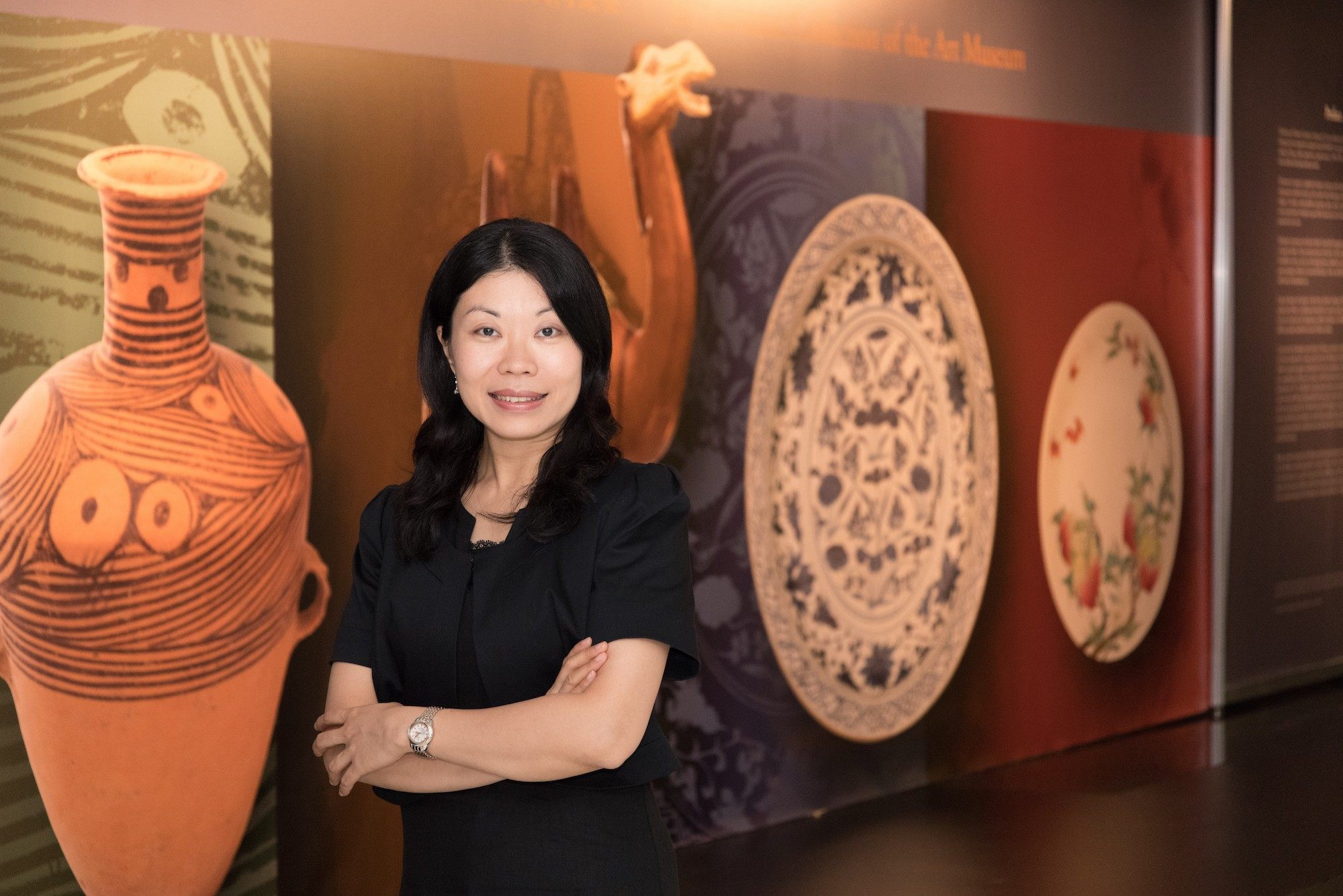
How a famous ink rubbing of Chinese calligraphy by Cai Yong changed a museum research fellow’s life
- An ink rubbing of the ‘Stele for Xia Cheng’, attributed to calligrapher Cai Yong, can be found in the collection of Chinese University of Hong Kong’s Art Museum
- Peggy Ho, research fellow at the museum, originally saw only the superficial beauty of the calligraphy, but now better understands its deeper meanings
Xia Cheng Bei, or the “Stele for Xia Cheng” (circa AD170), attributed to renowned calligrapher Cai Yong, is an Eastern Han dynasty stele, a form of ancient monument, describing the family history and life of Xia Cheng, which embodies Confucian ideas of moral rectitude and edification.
A Song dynasty ink rubbing of it can be found in the collection of Chinese University of Hong Kong’s Art Museum. Peggy Ho Pik-ki, research fellow at the museum, tells Richard Lord how it changed her life.
After I completed my undergraduate studies in geography at Chinese University, I learned about the Stele for Xia Cheng when I was preparing for the entrance examination for the master of philosophy in Chinese art history.
The original stele had been lost for a long time, and I saw the rubbing in a catalogue.

I saw it in a 2001 exhibition of the university’s Art Museum. The rubbing is very famous, and I was surprised to learn that it was in a collection at my university.
The stele is considered to be one of the best calligraphic works by Cai Yong, an influential calligrapher of clerical script of the Eastern Han dynasty. It’s very distinctive.
The characters are very broad, and the diagonal strokes are emphasised at the end, making the characters very decorative. The overall look has a sense of humour; it amuses me whenever I see it.
After I completed my PhD at National Taiwan University in 2011, I was invited to join the Chinese University of Hong Kong’s Art Museum to study a collection of more than 2,000 rubbings donated by the Bei Shan Tang Foundation.
My strategy to introduce them to the public was to select the most precious rubbings and give them an iconic name: Ten Treasures of Bei Shan Tang. The name, in fact, was inspired by the Stele for Xia Cheng.
There is a round seal in relief on the edge of the upper right corner, indicating that it was one of the Ten Treasures of Linchuan collected by the eminent rubbing collector Li Zonghan of the Qing dynasty.
It is easy for people to remember Bei Shan Tang’s rubbing collection and recognise that the two collections are of equal value.
The naming and promotion strategy was successful.
In 2014, I nominated the Stele for Xia Cheng and it was approved by the State Council of the People’s Republic of China to be listed in the National Catalogue of Precious Ancient Books.
In 2023, the Chinese University of Hong Kong organised the “Rare Rubbings of the Song Dynasty” exhibition with the Palace Museum in Beijing, with 20 of the rubbings showing in the Hall of Literary Brilliance, in the Forbidden City. The Stele for Xia Cheng and Ten Treasures of Bei Shan Tang are now well-known to the public.
Originally, I saw only the superficial beauty of the calligraphy, but now I have a better understanding of the evolution of these calligraphy styles and Chinese characters, the twists and turns in the spread of the rubbing, and the cultural meaning behind it and the stele.
As my understanding of this stele deepens, I cherish it more, appreciate its connotations and understand its value.

